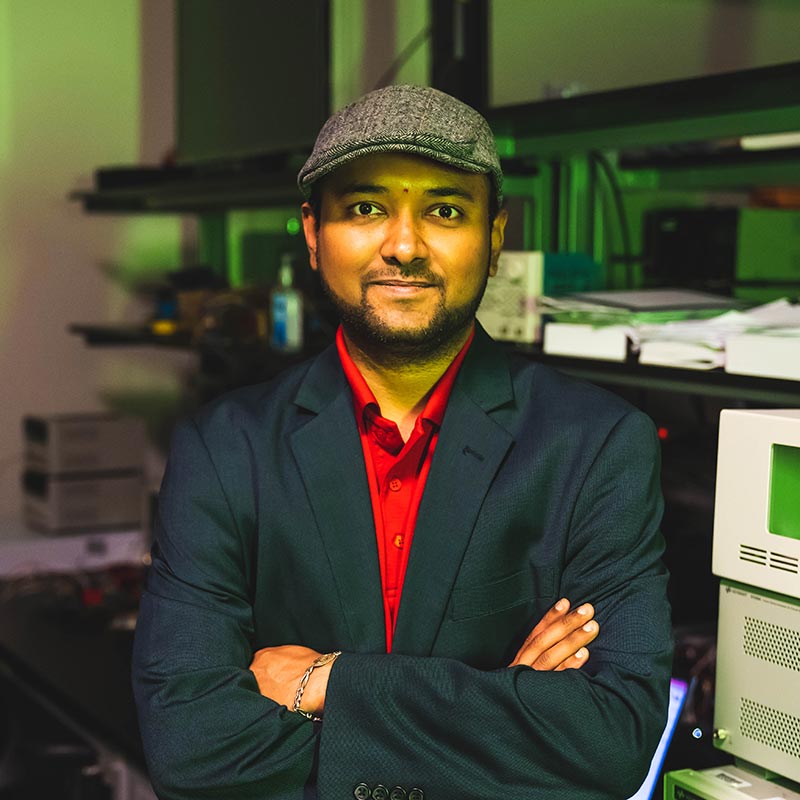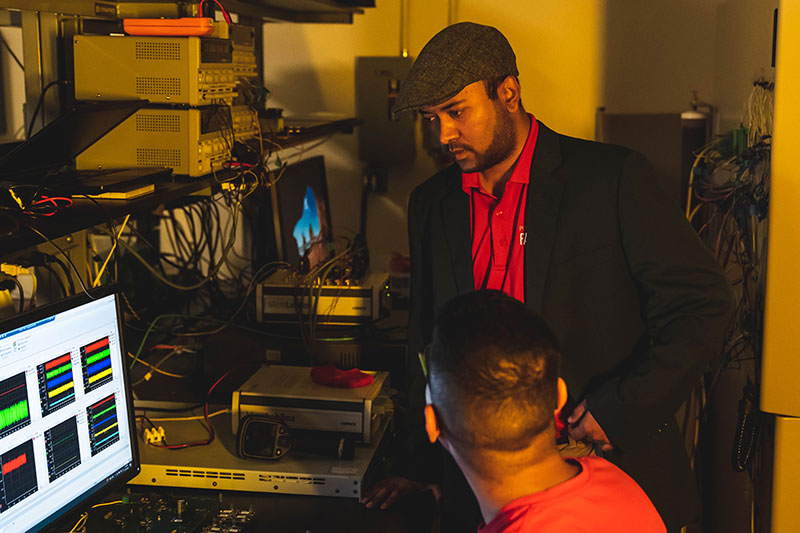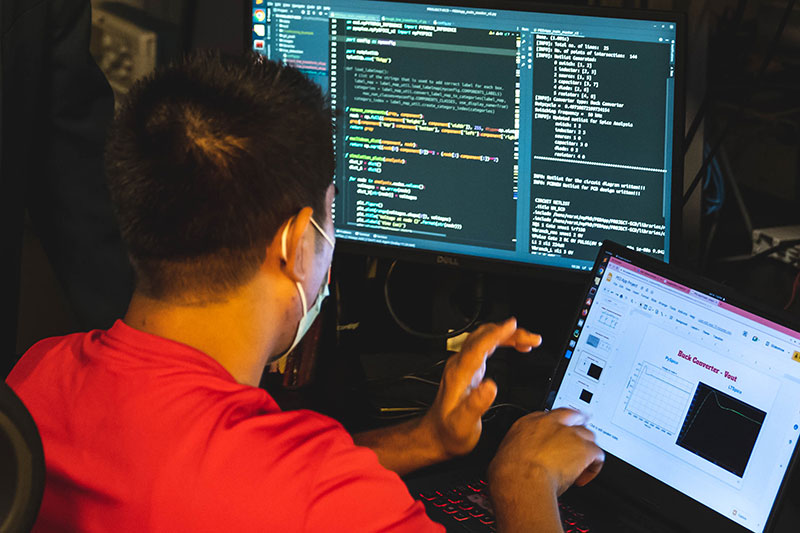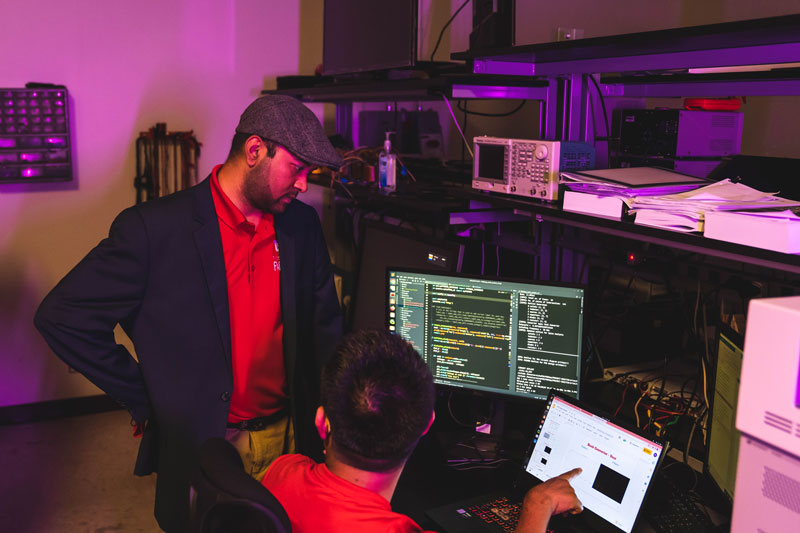
By Stephen Greenwell
 Harish Krishnamoorthy |
For Harish Sarma Krishnamoorthy, Assistant Professor of Electrical and Computer Engineering at the Cullen College of Engineering, it was his experiences in industry combining with his undergraduate work that inspired his research interests — the realization that any kind of alternative energy needs to be able to interact with other power systems.
“When I worked in the industry for GE Energy in India in the area of power conversion and analog electronics, I started realizing that I really liked analog electronics — circuit components, and planning with that, the technical challenge,” he said. “Around 2007, there was much more talk of renewable energy and electric vehicles, and you know, an important component to all of that is the power conversion system.”
“Without power conversion, you cannot really get energy from or efficiently from solar panels and wind turbines, you cannot charge electric vehicles, you cannot run motor drives in electric vehicles, because power electronics is an essential component. With those alternative energies expanding, all these exciting prospects came in, and I thought, 'Wow, it would be great to pursue research in this field,' because it interests me on the technical front. It's a lot of analog circuit design. And on the other hand, it's going to be an important area of research going ahead in the future.”
A Hidden Aspect of Everything
I'm a believer that in our applied field, we cannot afford to just unnecessarily waste time because technology is moving so fast.Harish Krishnamoorthy
Krishnamoorthy noted that power electronics and conversion is taking place in practically every modern device — for example, a wall charger providing power to a laptop or cell phone battery, which in turn powers individual applications. He's also part of a research group looking at a power system for the Moon.
“I'm looking at a project there where you take a power system to the moon, but you know, you don't have coal and natural gas and all this, what you have is solar energy,” he said. “From solar energy, you need to have some form of conversion to a usable form of electricity. And for that power, a power electronics-based system is a must.”
Krishnamoorthy added, “The U.S. Department of Energy reported that by 2030, almost 80 to 85 percent of every electron generated is going to pass through some form of power electronics circuit. That really drives me.”
The Path to Cullen
While doing his doctorate studies at Texas A&M, Krishnamoorthy interned at different points for Google, Ford Research and Schlumberger. However, while he liked the experience of each, he knew that a position outside of academia would require him to narrow his interests. After earning his Ph.D., he took a job with Schlumberger in Sugar Land, but he applied for an Assistant Professor opening when learning of it from a colleague.
“The University of Houston had an opening for an Assistant Professor, tenure track faculty, in the Electrical Engineering department, where they needed expertise in the field of oil and gas, and renewable energy,” he said. “My Ph.D. research was a lot about renewable energy, then power conversion with wind, solar battery storage. At Schlumberger, I had been looking at aspects of power conversion for oil and gas, like extreme environment of 200 degrees Celsius. I thought, 'Okay, this is probably perfectly tailor made for me.'”
When it came to his development in academia, Krishnamoorthy identified people inside and outside the UH system.
 |
 Harish Krishnamoorthy works in his lab with graduate students. |
“One is, of course, my Ph.D. advisor and Professor from Texas A&M University, Dr. Prasad Enjeti. He has been not just a Ph.D. advisor but an advisor in terms of life and how to go about business in the U.S. He helped me determine the pros and cons of industry and academia, and he always encouraged me to go to industry and to have a look at the industry. He said in applied fields like ours, it is extremely important to have some industry experience, because otherwise we won't know what the practical relevance is of what we do.”
Krishnamoorthy added that his very first interest in research came from his undergraduate professor, Kinattingal Sundareswaran, Ph.D., from the National Institute of Technology (NIT) in Trichy, India.
“The desire to research came from a senior design project in undergrad,” he said. “Professor Sundareswaran was very motivated to do research.”
At the Cullen College of Engineering, Krishnamoorthy said that Kaushik Rajashekara, Ph.D. — Distinguished Professor of Engineering, and a member of the National Academy of Engineering — had been a mentor for him.
“He has been a tremendous support, I would say, and it's more than a support,” Krishnamoorthy said. “We basically meet on a regular basis for anything, whether to discuss about personal or technical aspects. It has been, thankfully, a very smooth ride. The Chair of the ECE department, Dr. Badri Roysam, has been another tremendous support both at the professional and personal levels since I joined UH.”
Although he only joined the faculty in 2017, Krishnamoorthy has already been recognized with a variety of internal and external awards. Internally, he won a 2022 Research Excellence Award and a 2021 Teaching Excellence Award from the Cullen College of Engineering.
Outside of UH honors, Krishnamoorthy has been recognized as an OTC Emerging Leader for 2022 and a senior member of the IEEE. He is also one of 84 early-career engineers selected to take part in the prestigious National Academy of Engineering's Grainger Foundation Frontiers of Engineering 2022 U.S.-based symposium, hosted by Amazon, in Sept. 2022. In 2020, he received a $2.5 million grant from the U.S. Department of Defense to develop compact electric power systems for radar and other equipment. In 2022, he was awarded a ~$1 million grant from the U.S. Department of Energy (ARPA-E) to build state-of-the-art power conversion systems for high temperature applications such as downhole oil & gas.
Krishnamoorthy was also proud of the success several of his students have had, highlighting the work of one of them, Hussain Sayed. Sayed received an outstanding paper presentation award at the 2022 IEEE Applied Power Electronics Conference, and he is also the organization's 2022 recipient of the Joseph John Suozzi INTELEC® Fellowship Award in Power Electronics.
Looking to the Future, to Space
 Harish Krishnamoorthy works in his lab with graduate students. |
Going forward, Krishnamoorthy said he was excited for the opportunity to continue his research, and to help develop and shape students.
“One of the benefits of being at UH is the ability to work with really bright and motivated students. Whether it is courses, or in the research lab, I like to be very open to everyone. I'm a believer that in our applied field, we cannot afford to just unnecessarily waste time because technology is moving so fast. If a Ph.D. has to take like three, three and a half years, we have to quickly adapt and then work on areas that are really relevant to the industry.”
When it comes to research, Krishnamoorthy identified growing renewable energy systems and hydrogen energy as fields he was interested in, pointing at the $10 million gift that the university received from Shell to create the Energy Transition Institute.
“They are looking at how to have better carbon capture facilities, or better hydrogen-based energy storage facilities. Such things are very, very critical. The second thing is 5G communication, and as an extension, you have quantum computing. Right now, they are at a very early stage of the technical aspects of quantum sensing, with physics itself being investigated in a lot of sense. Once that is done, then you start looking at the practical implementation, and that's where our research will come in more. There will be a lot of challenges in those areas to make future computers faster and more efficient.”
Finally, Krishnamoorthy acknowledged interstellar travel ramifications as being on his mind as well.
“Another one of my passions is looking at the Moon and Mars,” he said. “Developing the power systems and power conversion systems for lunar applications, that's another major thing that I'm looking forward to.”
